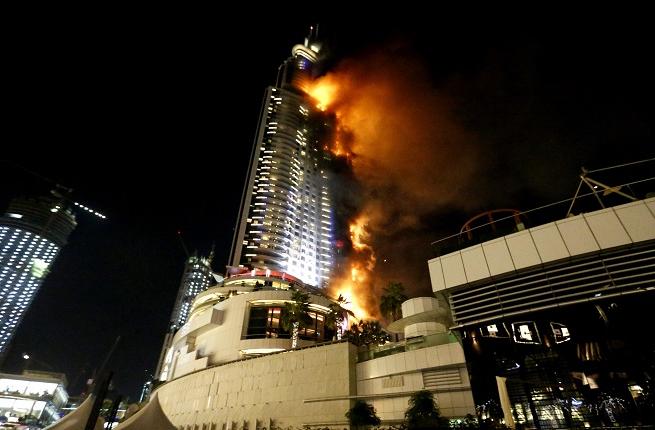The cost of insuring high rises in Dubai is expected to rise following a number of building fires in the emirate, including the Torch Tower in the Marina area, which caught alight in August for the second time in two years.
Any potential rise in premiums will be partly driven by increased demand for insurance as awareness grows of how at risk some of Dubai’s apartment blocks are to fire outbreaks, according to insurance market experts.
- Emaar Accomplishes Engineering Marvel With Sky Bridge On Address Sky View In Downtown Dubai
- More Malls: Over $4b In UAE Retail Projects Will Be Awarded In 2017
Many tall buildings in the emirate still have inadequate fire safety standards, with some still clad with poor-quality material that allows blazes to spread quickly, they said.
“The fire incidents have continued to occur, as the core problem of flammable cladding has unfortunately not been solved,” said Michael Kortbawi, partner at the Dubai-based law firm, BSA Ahmad Bin Hezeem & Associates.
“This has created awareness with building owners and owners’ associations about the need to carry proper levels of insurance coverage, and has thus led to an increase in demand for cover for high-rise cladded buildings.
“Underwriters have also taken note of the increased risk and have accounted for this in setting their rates. Therefore, rate increases can be expected.”
In 2013, the UAE revised its building safety code, which required cladding on all new buildings over 15 meters to be fire-resistant. Older buildings are exempt from the ruling.
The lack of adequate fire safety standards in high-rise towers is not just a Dubai problem.
In the UK a fire broke out in Grenfell Tower, West London, in June, claiming the lives of at least 80 people.
It is suspected that the blaze was able to spread quickly because of the type of cladding used on the building. Rates will inevitably be higher for those buildings in Dubai that do not meet required safety standards, said Anthony Cerchiai, head of general insurance at Nexus insurance brokers.
UAE Construction Spending Up 6.3 Percent In 2017 To $805 Billion
Dubai Economy Opens First Model Grocery On Sheikh Zayed Road
“Where a building is sub-standard, such as through the use of dangerous cladding, the insurer might totally refuse to take up the risk, leaving the homeowner or resident exposed and uninsured. In those cases, we advise people to talk to an expert in risk insurance,” he said.
Insurers are likely to be increasingly wary about insuring buildings, according to Tim Davies, deputy CEO at insurance broker Marsh UAE. “In relation to tall towers, we are seeing stricter underwriting criteria and more scrutiny is being applied,” he said.
However, Michael Rafter, CEO at the underwriter Arma Group, tempered expectations of significant price rises, saying premiums had already began to rise last year.
“During 2016 the market had experienced an increase in the property insurance rates, particularly in respect of high-rise buildings, especially those with cladded exteriors,” he said, adding that this momentum subsided during the second quarter of this year.
“The current fire losses will certainly make more insurers hesitant about decreasing premiums, but we don’t see these current losses as events that push the insurance markets up significantly from the increases already achieved during 2016,” he said.
Dubai Holding Puts $20.2 Billion Jumeirah Project On Hold
Cityscape Global 2017 Kicks Off In Dubai
Instead, Rafter sees insurers placing greater emphasis on their clients implementing risk management and loss-prevention measures.
While premiums for high rises are likely to start edging upwards, the wider insurance market in the UAE remains relatively soft owing to a competitive and overcrowded market, Kortbawi said.
“This leads to a price war, which has affected the premium value on all levels. Until consolidation takes hold or market penetration rates increase, continued price weakness in at least some lines can be expected,” he said.
By Rebecca Spong
Join Albawaba Business
Follow Albawaba Business
https://www.albawaba.com/business/insurance-hikes-for-dubai-high-rise-buildings-after-fires-1046906













